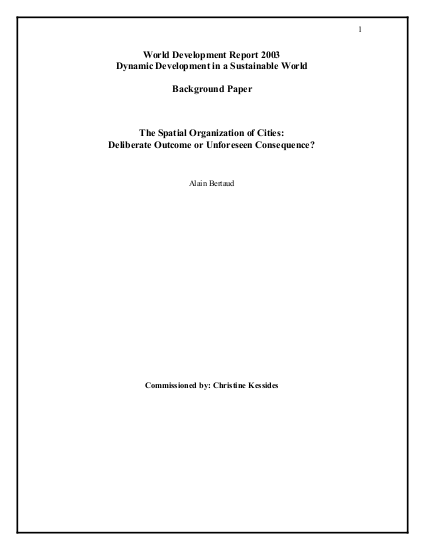
The raison d’être of large cities is the increasing return to scale inherent to large labor markets. The cities’ economic efficiency requires, therefore, avoiding any spatial fragmentation of labor markets. In simpler terms, it means that all the locations where jobs are offered should, potentially, be physically accessible from the place of residence of all households within about an hour travel time. This requirement should be borne in mind when evaluating alternative urban shapes. Any type of spatial organization implying that residence and jobs should be matched individually – i.e. that workers need to have a good access only to their current job – contradicts our premises that large competitive labor markets are efficient and that efficiency alone justifies the complexity and high operating costs of large cities.
Resource collections
- UN Habitat - Urban Response Collection
- Urban Response - Urban Crisis Preparedness and Risk Reduction
- Urban Response Collection - Community Engagement and Social Cohesion
- Urban Response Collection - Economic Recovery
- Urban Response Collection - Environment and Climate Change
- Urban Response Collection - Housing, Land and Property
- Urban Response Collection - Urban Crisis Response, Recovery and Reconstruction
- Urban Response Collection - Urban Resilience